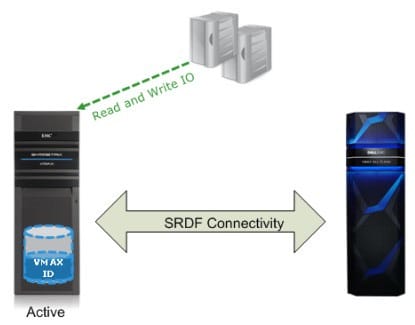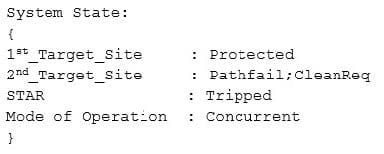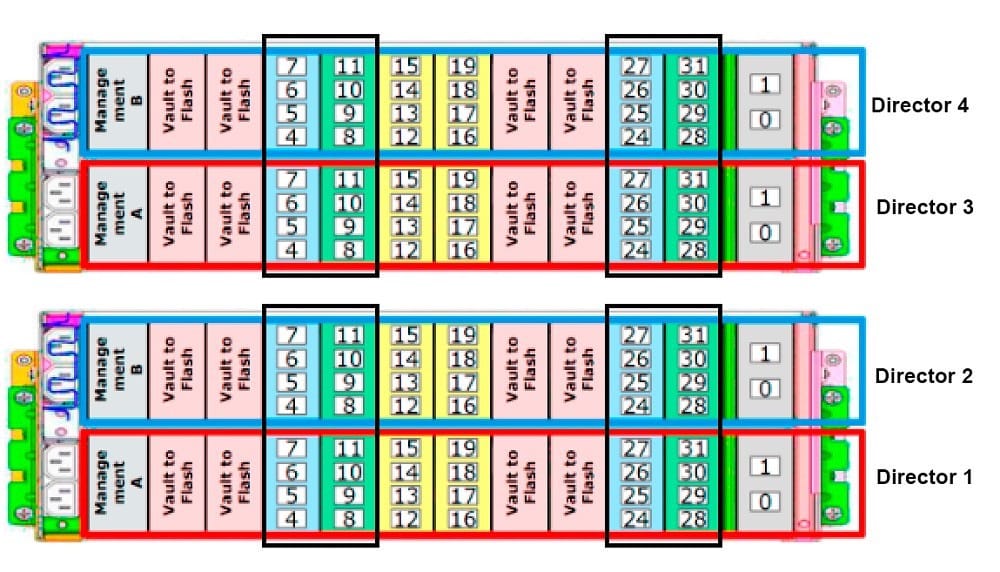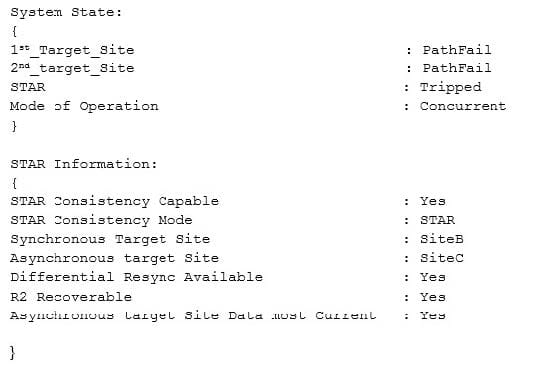Exam Details
Exam Code
:E20-807Exam Name
:Expert - VMAX All Flash and VMAX3Certification
:EMC CertificationsVendor
:EMCTotal Questions
:72 Q&AsLast Updated
:Jul 08, 2025
EMC EMC Certifications E20-807 Questions & Answers
-
Question 41:
XtremIO is part of a company's FAST.X environment with a VMAX All Flash array and will remain as part of the configuration. The VMAX All Flash array is configured for SRDF as well. In addition, a large VMware environment is hosted on the XtremIO, however, the VMware datastore devices are not virtualized to the VMAX All Flash array.
If the company wants to have remote replication for the VMware devices, how can this be accomplished?
A. Virtualize the VMware datastore devices using incorporation and add to the SRDF configuration
B. Connect an additional VMAX3 or VMAX All Flash array to the XtremIO array and enable SRDF
C. Virtualize the VMware datastore devices using encapsulation and add to the SRDF configuration
D. Enable SRDF on the XtremIO array and add the VMware datastore devices to the configuration
-
Question 42:
A Non-Disruptive (NDM) session is active between a VMAX3 array and a VMAX All Flash array. What happens during the NDM Cutover operation?
A. I/O paths to both arrays are active
B. Paths to the VMAX3 are made inactive
C. Host discovers additional paths to the arrays
D. Application's storage configuration is replicated
-
Question 43:
Refer to the Exhibit.

Migration of data from a VMAX to a VMAX All Flash array is planned. the target array has been installed and RDF connectivity between the two arrays has been established. In addition, the application host is accessing data on the source array.
What is the result when the Non-Disruptive Migration Setup operation is performed?
A. Creates RDF pairs and places them in pass-through mode
B. Replicates the storage configuration from the source to the target array
C. Creates an empty Dynamic RDF group on the source and target arrays
D. Zones the application host initiators to the target array
-
Question 44:
How can TDEVs be moved between the SRPs when using FAST.X?
A. By associating the TDEVs with a different SLO
B. By changing the Virtual Pool for the TDEVs
C. By changing the SRP associated with the storage group
D. By using Virtual LUN Migration
-
Question 45:
A VMAX3 array needs additional capacity added. The array is providing acceptable performance and the administrator wants to ensure performance is maintained as new drives are added.
A VMAX3 array needs additional capacity added to maintain performance?
A. Add storage to all tiers maintaining the existing ratio
B. Add storage to a new internal SRP
C. Add storage to the most over utilized tier
D. Add storage to a new external SRP
-
Question 46:
After a failure of a Concurrent SRDF/Star configuration, the Star query shows:

Which Star action(s) should be executed first to recover from this failure?
A. Reset 1st Target Site
B. Cleanup 2nd Target Site, followed by Reset 2nd Target Site
C. Disable Star
D. Cleanup 2nd Target Site, followed by Switch to 2nd target site
-
Question 47:
Refer to the Exhibit.

Which port assignments for external array connectivity satisfy high availability and best practices for a dual engine VMAX3 configuration with FAST.X?
A. Director 1 port 4, Director 1 port 5 Director 4 port 4, Director 4 port 5
B. Director 1 port 4, Director 1 port 9 Director 1 port 24, Director 1 port 31
C. Director 1 port 4, Director 1 port 9 Director 2 port 4, Director 2 port 9
D. Director 1 port 4, Director 2 port 4 Director 1 port 8, Director 4 port 24
-
Question 48:
To determine Service Level Objective compliance on a VMAX3, where is the I/O response time measured?
A. Frontend Directors
B. Host Bus Adapters
C. SAN Switches
D. Backend Directors
-
Question 49:
Based on business requirements, Concurrent SRDF/Star has been implemented with host infrastructure at the Workload and Asynchronous sites. A disaster fault has occurred. Star query shows:

Which site should the workload be moved to and which site's data should be kept?
A. Switch to the Synchronous site Keep the Synchronous site data
B. Switch to the Asynchronous site Keep the Asynchronous site data
C. Switch to the Synchronous site Keep the Asynchronous site data
D. Switch to the Asynchronous site Keep the Synchronous site data
-
Question 50:
A new VMAX3 array has been added to the environment. Unisphere for VMAX has discovered the array and can be used to manage the array. However, Unisphere is not able to collect any performance data for the array.
What is a possible cause?
A. Registration for performance data collection has not been done
B. Performance data repository is full
C. storgnsd daemon is not running
D. Root Cause Analysis Interval was changed
Related Exams:
D-GAI-F-01
Dell GenAI Foundations AchievementD-MSS-DS-23
Dell Midrange Storage Solutions Design 2023D-OME-OE-A-24
Dell OpenManage Operate AchievementD-PDD-DY-23
Dell PowerProtect DD Deploy 2023D-PE-OE-23
Dell PowerEdge Operate 2023D-PEXE-IN-A-00
Dell PowerEdge XE9680 and XE8640 InstallD-PSC-MN-01
Dell GenAI Foundations AchievementD-PST-MN-A-24
Dell PowerStore Maintenance AchievementD-PWF-DS-23
Dell PowerFlex Design 2023D-RP-DY-A-24
Dell RecoverPoint Deploy Achievement
Tips on How to Prepare for the Exams
Nowadays, the certification exams become more and more important and required by more and more enterprises when applying for a job. But how to prepare for the exam effectively? How to prepare for the exam in a short time with less efforts? How to get a ideal result and how to find the most reliable resources? Here on Vcedump.com, you will find all the answers. Vcedump.com provide not only EMC exam questions, answers and explanations but also complete assistance on your exam preparation and certification application. If you are confused on your E20-807 exam preparations and EMC certification application, do not hesitate to visit our Vcedump.com to find your solutions here.